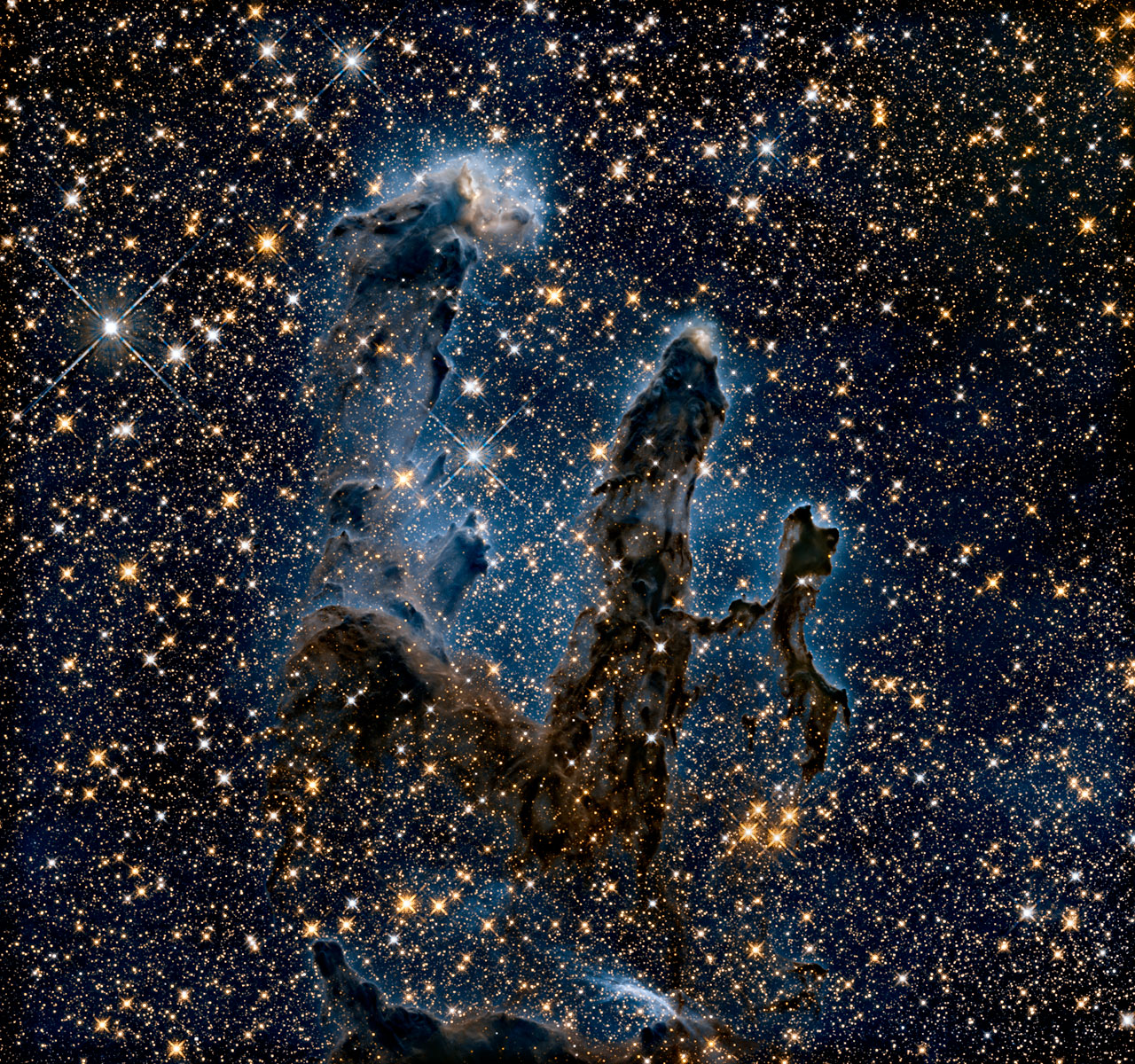Human eyes can see only a small portion of the range of radiation given off by the objects around us. We call this wide array of radiation the electromagnetic spectrum, and the part we can see visible light.
In this Hubble Space Telescope image, researchers revisited one of Hubble’s most iconic and popular images: the Eagle Nebula’s Pillars of Creation.
Here, the pillars are seen in infrared light, which pierces through obscuring dust and gas and unveil a more unfamiliar — but just as amazing — view of the pillars. The better-known image is of the pillars in visible light.
In this ethereal view the entire frame is peppered with bright stars and baby stars are revealed being formed within the pillars themselves. The ghostly outlines of the pillars seem much more delicate, and are silhouetted against an eerie blue haze.
Explore how light affects the images we see. Find more online activities on Hubble Inspires.
Image Credit: NASA, ESA/Hubble and the Hubble Heritage Team
人类眼睛只能看到我们周围物体辐射范围的一小部分。我们称这种广泛的辐射为电磁波谱,我们能看到的部分为可见光。
在这张哈勃太空望远镜的影像中,研究人员重新研究了哈勃最具标志性和最受欢迎的影像之一:鹰状星云的创造之柱。
从红外线中可以看到这些柱子,它们透过遮蔽尘埃和气体,展现出一种更不熟悉但同样神奇的景象。创造之柱更广为人知是在可见光下的图像。
在这种空灵的视野中,整个框架都点缀着明亮的恒星,而在支柱本身内部则形成了幼小的恒星。柱子上幽灵般的轮廓看起来更加精致,并映衬着阴森诡异的蓝色阴霾。
探索光线如何影响我们看到的图像。在Hubble Inspires上找到更多在线活动。
图片来源:NASA,ESA / Hubble和Hubble Heritage Team




神话的存在,大爱!